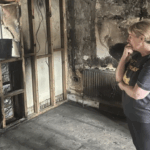Once the domain of late-working businessmen in Japan, capsule hotels have evolved into a global trend, attracting travelers with their quirky, compact accommodations and innovative designs. Initially introduced in Osaka in 1979, the first capsule hotel was a practical solution for those needing a quick, low-cost rest without the expense of a full hotel room. These narrow sleeping pods, often housing exhausted commuters, soon became a cultural novelty. Over time, their appeal expanded, drawing in tourists eager to experience a slice of Japanese culture.
Today, capsule hotels have undergone a remarkable transformation. With rising real estate prices making traditional hotels increasingly expensive, capsule hotels have become an attractive alternative for budget-conscious travelers. Offering more privacy than a hostel dormitory and greater comfort than camping, these pods are also catering to the booming solo travel market. Many capsule hotels now offer single-sex options, enhancing security for those traveling alone.
The global capsule hotel market is projected to reach $327 million by 2031, and to stay ahead of the curve, these hotels have embraced a new era of hybrid designs. The TikTok generation is being lured in by outlandish concepts, from upcycled sewer pipes in Colombia’s desert to futuristic pods in Sydney, Australia, equipped with ambient controls for a personalized stay. Some have gone even further, blending capsule hotels with bookstores, allowing guests to sleep among the shelves, while others bring luxury to the traditionally no-frills concept with elegant decor and high-end amenities like duck-feather duvets.
One standout example is the Nine Hours chain of capsule hotels across Japan. Known for its minimalist design, Nine Hours has introduced a “9h sleep fitscan” service that collects data on guests’ sleep patterns, including heart rate, facial expressions, and snoring. This sleep-focused concept sets it apart from the typical budget stays, prioritizing comfort and health alongside affordability.
For those seeking an adrenaline-fueled twist, the Skylodge Adventure Suites in Peru offer transparent sleeping pods clinging to a cliff above the Sacred Valley. Reached only by a 400-meter climb or zipline, these capsules provide guests with a thrilling stay and breathtaking 300-degree views of the surrounding mountains.
In Colombia’s Tatacoa Desert, the Tubo Hotel offers a more laid-back experience. Guests sleep in colorful, upcycled sewer pipes set in a desert oasis, with access to a shared pool and lush gardens. The hotel’s unique design makes it a memorable place to rest after exploring the surrounding desert landscapes.
Lastly, on Vancouver Island, Canada, the Free Spirit Spheres suspend guests high among conifer trees in spherical pods. Promoting ecotourism and sustainability, these floating accommodations allow travelers to immerse themselves in nature while enjoying modern comforts.
As capsule hotels continue to evolve, their growing appeal lies in their ability to offer something new and unexpected—whether through cutting-edge technology, unique locations, or creative designs—ensuring they remain a compelling choice for a new generation of travelers.
















